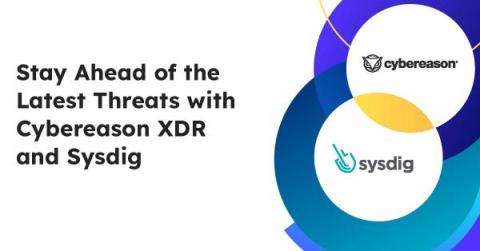Security | Threat Detection | Cyberattacks | DevSecOps | Compliance
XDR
When Solving the XDR Puzzle, Focus on the Problems You Must Fix
Implementing Managed XDR Services: Best Practices
Boost Detection and Response with Cybereason and Sysdig
The Gartner 2021 Hype Cycle for Cloud reports 99% of breaches start with cloud misconfigurations. Thus, having a philosophy of protecting just traditional endpoints – servers, laptops, desktop PCs, and mobile devices – with EDR (Endpoint Detection and Response) software is not enough. Sysdig has teamed up with multiple security organizations in the cloud security ecosystem to offer comprehensive security solutions.
Undecrypting the cybersecurity alphabet soup: MDR vs. XDR
XDR and MDR are cybersecurity solutions to enhance an organization's threat identification and response capabilities. While both solutions target the same objective, they employ different approaches. MDR strengthens an organization's internal security team with external expertise, whereas XDR streamlines security architecture through a centralized dashboard and automation of tedious tasks.
CrowdStrike Expands XDR Ecosystem to Give Customers a Data Advantage
Cybersecurity is fundamentally a data problem. As adversary techniques continue to mature, organizations still struggle to collect the right data from all their security and IT point products to detect and respond to evolving threats. CrowdStrike offers a clear data advantage in the cybersecurity market.
Falcon Insight for ChromeOS: The Industry's First Native XDR Offering for ChromeOS
In recent years, ChromeOS device usage among businesses has seen a significant uptick, particularly in its adoption across verticals, from schools to large enterprises. According to recent IDC research, 16% of North American organizations have ChromeOS devices1 and the percentage is only expected to increase. The success of ChromeOS devices like Chromebooks can be attributed to built-in security, simple management and premium performance.
XDR vs SOAR: comparing functionalities for MSPs
Managed service providers (MSPs) must be prepared to defend their customers against advanced threats and, to do so, they need to keep track of different data sources by deploying solutions that are designed to improve their customers’ security posture through effective detection and proactive responses to potential incidents.










